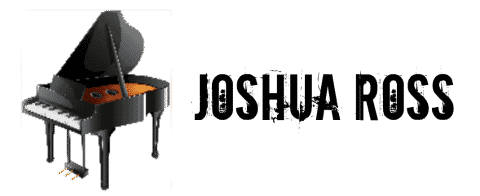As an Amazon Associate I earn from qualifying purchases.
As a pianist and music teacher, I’ve seen students transform their playing by simply adjusting their bench height. Your piano keyboard should be positioned so that when you sit with your arms at your sides, your forearms extend straight out to reach the keys, allowing your elbows to sit just slightly higher than the keyboard.
This setup encourages a natural, relaxed posture which is crucial for fluid play and long practice sessions without strain.
Want to Learn Piano?Click Here

Especially for beginner pianists and children, a comfortable setup is key to maintaining enthusiasm and reducing the risk of injury. For a child, the bench might need to be adjusted more frequently as they grow.
A proper piano bench that is height adjustable can make all the difference, enabling a younger pianist to achieve the correct posture and reach the pedals comfortably.
Remember, good piano posture keeps your back straight yet relaxed, your feet flat on the floor, and your arms forming a nearly right angle at the elbows when your hands are on the keys.
Take a moment to sit at your piano, adjust your bench, and notice how it feels when your body is positioned correctly.
Setting the Correct Height for Your Piano Bench

When you’re setting up your piano bench, the correct height is crucial to ensure comfort and proper technique. Let’s get it just right for you.
Determining the Ideal Bench Height
Your piano bench should be at a height where your forearms are parallel to the floor when your hands are on the keyboard. This usually means that the bench height will range from 18 to 22 inches.
However, it’s important that your elbow is at the same level as the keys and forms a nearly right angle—too low, and you’ll strain your wrists; too high, and your shoulders will tense up.
A good checkpoint is to sit at the bench with your feet firmly on the floor and your arms resting on the keys. Your forearms should extend straight out without droop at the wrist, and your shoulders should be relaxed, not elevated.
For a quick reference, here’s a table summarizing the ideal bench heights:
| User’s Arm Length | Ideal Bench Height |
|---|---|
| Short | 18 inches |
| Average | 20 inches |
| Long | 22 inches |
Remember, these are general guidelines. If you need slight adjustments, many benches are adjustable. Alternatively, cushions or pillows can be used for fixed-height benches to achieve the desired elevation.
Adjusting Bench Height for Children and Adults
For children, an adjustable stool is a wonderful choice since their height will change as they grow. Make sure their feet can reach the floor or a footstool. Their upper arms should be comfortably close to their body, and their elbows at the right angle to the piano keys.
Adults may need larger benches, as adult-sized bodies have different proportions. Look for a bench that’s about 30 inches wide to accommodate different statures comfortably. It’s not just about the height; the width ensures they have enough room to maneuver without being cramped.
Proper Piano Playing Posture and Position
Mastering the proper piano playing posture and position is pivotal not just for your technique but also for preventing injury. Let’s focus on how to balance your body and arm placement and ensure overall comfort to reduce strain while you play.
Balancing Body and Arm Placement
Sit at your piano with your back straight and your feet flat on the floor. The keyboard should be positioned so that when your fingers are on the keys, your elbows are slightly higher than the keys or at least at the same level. This avoids unnecessary tension in your arms.
Consider the size of the piano; the height adjustments might differ slightly between a baby grand and an upright piano.
Your wrists should stay relatively straight to allow fluid movement across the keys, without drooping or being at a steep angle. It’s much like the posture Glenn Gould was known for, minus his famously low position, as most pianists find a higher position more sustainable.
If you’re using a digital piano, make sure the keyboard stand is adjustable to match your height requirements.
Ensuring Comfort and Reducing Strain
Comfort is key to maintaining a good playing technique. An adjustable chair can cater to pianists of different sizes, offering better flexibility.
If your feet don’t reach the ground or the piano pedals, use a footstool or pedal extender for support. Your buttocks should be comfortably set on the seat, with your torso held horizontally and able to fully extend while reaching for the keys.
As for the hands, your fingers should form a natural arc, with knuckles slightly raised – imagine the shape they create when you let them hang loose by your sides. This shape allows your fingertips to strike the keys with firmness and precision. If you find yourself stretching or compressing your hand muscles, adjust until you feel relaxed.
Potential adjustments for pianists of various sizes:
| Feature | Adjustable Element | Size/Flexibility Consideration |
|---|---|---|
| Chair | Height | To match the height of elbows to keyboard level |
| Piano Stool | Height | To support feet reaching the ground or pedals |
| Footstool/Pedal Extender | Height/Position | To assist with pedal access if feet don’t reach |
| Keyboard Stand | Height | For digital pianos to suit player’s arm length |
Hello & thanks for stopping by! I’m a professional concert pianist and piano instructor. In the United States, I’ve given successful performances in several places including New York, Florida, Connecticut, & New Jersey, I have also performed internationally in Italy and made my Carnegie Hall debut in 2014. I enjoy blogging about the piano, the art of performance, general music, current events and the latest in music production.
